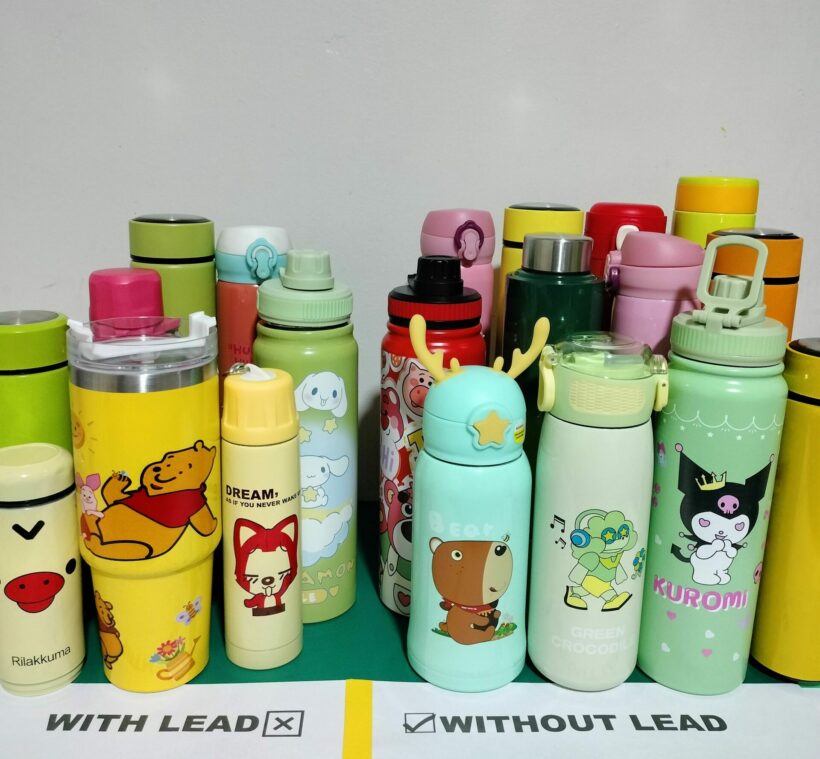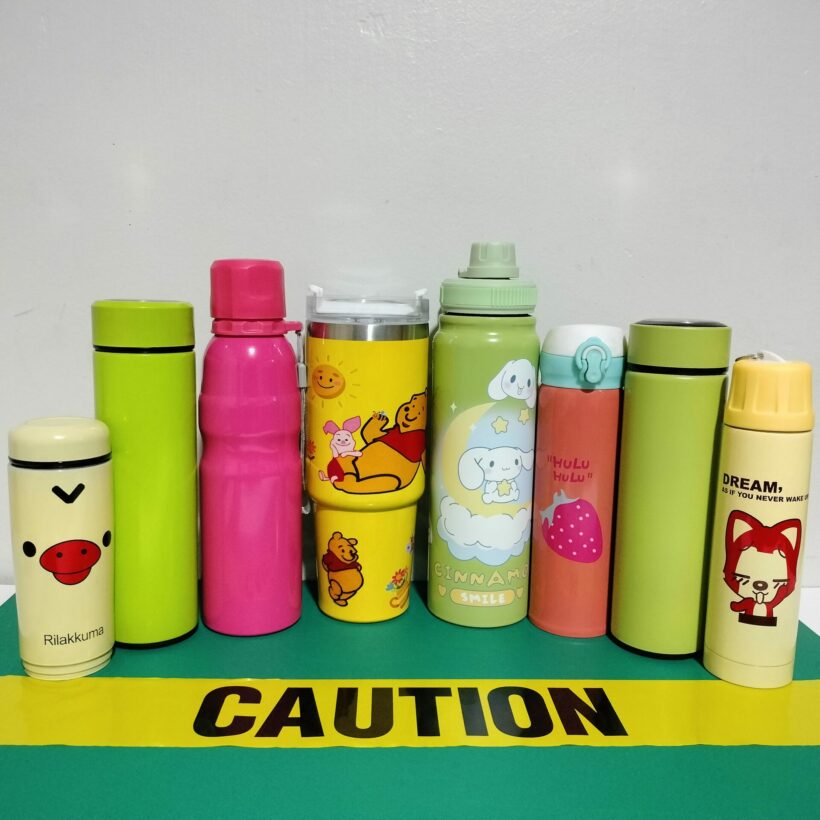Group urges buyers to assert consumer right to product information and safety, calls on the authorities to pull out non-compliant products from the market
19 July 2024, Quezon City. Not all reusable stainless steel water bottles and tumblers are created equal. Some may be decorated with lead-containing paints in violation of the country’s lead paint standard, posing health risks to users, especially to young children.
The toxics watchdog group, EcoWaste Coalition, an advocate for reuse and refill to fight plastic pollution and the climate crisis, encouraged consumers to insist on their legally protected rights to product information and safety after detecting lead above 90 parts per million (ppm) in some of these supposedly eco-products.
The 90 ppm limit is the strictest regulatory standard for lead content in paint established by any government, including the Philippines, across the globe. DENR A.O. No. 2013-24, as further clarified by EMB M.C. No. 010 issued in 2016, banned the use of paints with lead in excess of 90 ppm in toys and related children’s products effective December 31, 2016.
In test buys conducted in time for the start of school year 2024-2025, EcoWaste Coalition detected very high levels of lead on the exterior coatings of some stainless steel water bottles and tumblers procured for P100 to P250 each from retail stores in Caloocan, Manila and Quezon Cities, and from online sellers, too. The group used a point-and-shoot X-Ray Fluorescence (XRF) analyzer to screen the paints on the water bottles and tumblers for lead content.

The 8 stainless steel water bottles and tumblers on the left are coated with leaded paints, while the 12 products on the right are not.
Out of the 20 samples purchased and analyzed, eight failed the 90 ppm lead content limit. Five of these samples contained dangerously high levels of lead in excess of 10,000 ppm, and one of them had over 100,000 ppm lead. None of these products provided lead hazard warnings.
On the positive side, lead was not detected on the other 12 samples, indicating that stainless steel water bottles and tumblers can be decorated with lead-safe paints that will not cause any lead exposure risks.
According to the EcoWaste Coalition, the presence of lead on the surface coatings of the analyzed water bottles and tumblers is very disturbing as the leaded paint will break over time with repeated use. The lead on the paint may end up being ingested by the user, especially by a child who is unaware of the health risk. Lead is toxic if ingested and can cause adverse health problems.
“Lead exposure can have serious consequences for the health of children,” as pointed out by the World Health Organization (WHO). “At high levels of exposure to lead the brain and central nervous system can be severely damaged causing coma, convulsions and even death. Children who survive severe lead poisoning may be left with permanent intellectual disability and behavioral disorders.”
“At lower levels of exposure that cause no obvious symptoms, lead is now known to produce a spectrum of injury across multiple body systems. In particular, lead can affect children’s brain development, resulting in reduced intelligence quotient (IQ), behavioral changes such as reduced attention span and increased antisocial behavior, and reduced educational attainment. Lead exposure also causes anemia, hypertension, renal impairment, immunotoxicity and toxicity to the reproductive organs. The neurological and behavioral effects of lead are believed to be irreversible,” the WHO said.
For the protection of consumers, the EcoWaste Coalition urged the authorities to take immediate action and remove non-compliant products from the market to avoid lead poisoning hazard involving young children.
The group likewise repeated its call for a full ban on hazardous chemicals in all children’s products, including school materials, and for such products to be properly tested and labeled, stressing mandatory disclosure of chemicals in product (CiP) information will assist consumers in making sound purchasing decisions for their children who are most vulnerable to toxic exposures.
References:
https://chemical.emb.gov.ph/wp-content/uploads/2017/03/DAO-2013-24-CCO-Lead.pdf
https://chemical.emb.gov.ph/wp-content/uploads/2017/03/MC-2016-010.pdf
https://www.who.int/news-room/fact-sheets/detail/lead-poisoning-and-health






